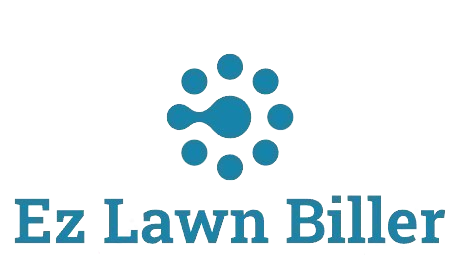Efficiently optimizing your routes can save time and money, but common mistakes can hinder your success. Learn how to avoid them!
Avoid These Common Optimize Routes Mistakes
In today’s fast-paced world, businesses are constantly looking for ways to improve efficiency and reduce costs. One crucial area where this can be achieved is in route optimization. Properly optimizing your routes can lead to significant savings in fuel, time, and labor, ultimately boosting customer satisfaction and profitability. However, many companies fall into common pitfalls that can negate these benefits. In this post, we’ll explore these mistakes and provide practical tips to avoid them, ensuring your routing strategy is as effective as possible.
Route optimization involves planning the most efficient path for service delivery, which is especially relevant for lawn care businesses. Improper route management can lead to wasted resources, missed appointments, and dissatisfied clients. With tools like lawn billing software, you can streamline your operations and enhance your service delivery. This article will cover the most common mistakes in route optimization and how to circumvent them.
Failing to Analyze Traffic Patterns
One of the most significant mistakes in route optimization is neglecting to consider traffic patterns. Traffic conditions can drastically affect travel time, and failing to account for this can lead to delays that impact your entire schedule. For instance, if a lawn care service routinely schedules appointments during rush hour without adjusting their routes accordingly, they may experience increased travel times, resulting in missed appointments.
Utilizing real-time traffic data is essential when planning your routes. Many navigation apps provide updates on traffic conditions that can help you avoid congestion. By incorporating these insights into your scheduling process, you can ensure that you are providing timely services to your clients, ultimately leading to higher satisfaction levels.
Additionally, understanding peak traffic times in different neighborhoods can help you adjust your service windows. If you know that a specific area experiences heavy traffic in the mornings, consider scheduling your appointments for later in the day. This strategic planning can save you time and fuel, enhancing your overall operational efficiency.
Neglecting to Factor in Service Time
Another common oversight is underestimating the time required to complete each service. Many lawn care businesses make the mistake of planning their routes without adequately considering how long each job will take. This can create a domino effect, leading to delays for subsequent appointments.
To avoid this mistake, it’s crucial to analyze historical data regarding service times. By tracking the time taken for similar jobs, you can create a more accurate estimate for future appointments. This will help you allocate sufficient time for each service, thus maintaining your schedule and ensuring you don’t disappoint clients by arriving late.
Incorporating a lawn service app that allows for service time tracking can be immensely beneficial. This functionality helps you make informed adjustments to your route and enhance your time management. By doing so, you can improve your overall productivity and client satisfaction.
Ignoring Customer Preferences
Customer preferences play an essential role in route optimization, yet they are often overlooked. Ignoring customer requests regarding their preferred service times can lead to dissatisfaction and lost business. For example, a customer may prefer service in the late afternoon due to their work schedule, but if this is not considered in your routing strategy, you risk alienating them.
To address this, maintain open lines of communication with your clients. Use customer management tools to log their preferences and adapt your scheduling accordingly. This not only enhances customer satisfaction but also builds loyalty, which is invaluable in the competitive lawn care market.
Utilizing a service company software that integrates client preferences can streamline this process. By ensuring that you honor customer requests, you can foster positive relationships and encourage repeat business.
Overlooking Route Planning Software
Many businesses still rely on manual methods for route planning, which can lead to inefficiencies and errors. Overlooking the use of route planning software is a significant mistake that can cost time and money. Advanced routing software can calculate the most efficient routes based on various factors like traffic, distance, and service time.
Investing in quality routing software can drastically improve your efficiency. For instance, tools like lawn service software can help automate the routing process, allowing you to spend more time focusing on service delivery rather than logistics. The ability to visualize routes and adjust them in real-time can lead to better resource management and reduced operational costs.
Additionally, many of these software solutions offer integrations with client management systems, allowing for seamless data transfer and better overall organization of your business operations. Make the switch to automated routing and witness the transformation in your service efficiency.
Not Accounting for Weather Conditions
Weather can significantly impact the ability to perform lawn care services, yet it is frequently neglected in route optimization efforts. Rain, snow, or extreme heat can prevent scheduled services from being completed, leading to delays and rescheduling headaches.
To avoid disruptions in your routing, always check the weather forecast before planning your routes. This will enable you to anticipate potential issues and adjust your schedule accordingly. If severe weather is predicted, consider reaching out to clients in advance to reschedule their appointments, ensuring they remain satisfied with your service.
Utilizing a lawn company app that provides weather updates can make this process much easier. By proactively managing your schedule based on weather conditions, you can optimize your routes and minimize the impact of unforeseen circumstances on your business.
Failing to Review and Adjust Regularly
Static routing strategies can quickly become outdated. One of the most critical mistakes in route optimization is failing to review and adjust your routes regularly. Your business environment may change due to factors such as new clients, changing traffic patterns, or shifting seasonal demands, all of which require you to adapt your routing approach.
Regular reviews of your routing strategy will allow you to identify inefficiencies and implement necessary adjustments. Consider conducting a quarterly analysis of your routes, evaluating factors like service time, customer preferences, and overall efficiency. This will help you stay proactive and responsive to changing needs.
Moreover, leveraging a lawn company computer program to assess your performance can provide valuable insights into areas of improvement. By continually refining your routes, you can drive greater efficiency and ensure your clients receive the best possible service.
Not Training Your Team
Even the most advanced route optimization tools will fail without proper training for your team. Neglecting to train your staff on how to utilize routing software and follow optimized routes can lead to miscommunication and inefficiencies. It is essential to ensure that your team understands the importance of following planned routes and using the tools available to them.
Invest in training sessions to familiarize your team with the software and the rationale behind optimized routing. This will empower them to make informed decisions on the ground and adapt as needed during the day. A well-informed team can enhance overall efficiency, leading to increased productivity and customer satisfaction.
Additionally, encourage feedback from your team regarding the routing process. They may have insights based on their experiences that can lead to further optimization and improvements. By fostering a culture of continuous learning and adaptation, your company can remain competitive in the lawn care industry.
Conclusion
Route optimization is a critical aspect of running a successful lawn care business, yet many operators stumble on common mistakes that hinder their efficiency. By recognizing and addressing these pitfalls—such as failing to analyze traffic patterns, neglecting customer preferences, and not utilizing modern software—you can optimize your routing strategy and enhance your service delivery.
Always be proactive about reviewing and adjusting your routes, training your team effectively, and incorporating real-time data into your planning. This will not only improve your operational efficiency but will also lead to higher client satisfaction and retention rates.
As you look to streamline your operations, consider tools like service company software that can assist in automating and optimizing your business processes. By avoiding these common route optimization mistakes, you can take your lawn care business to new heights.




